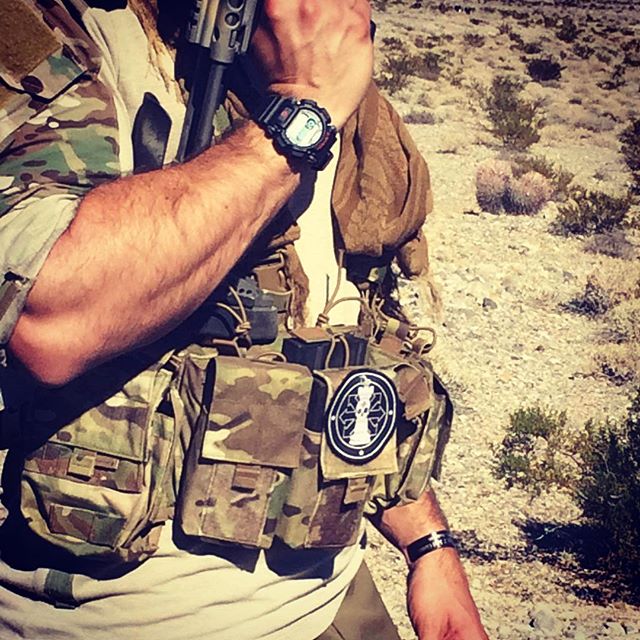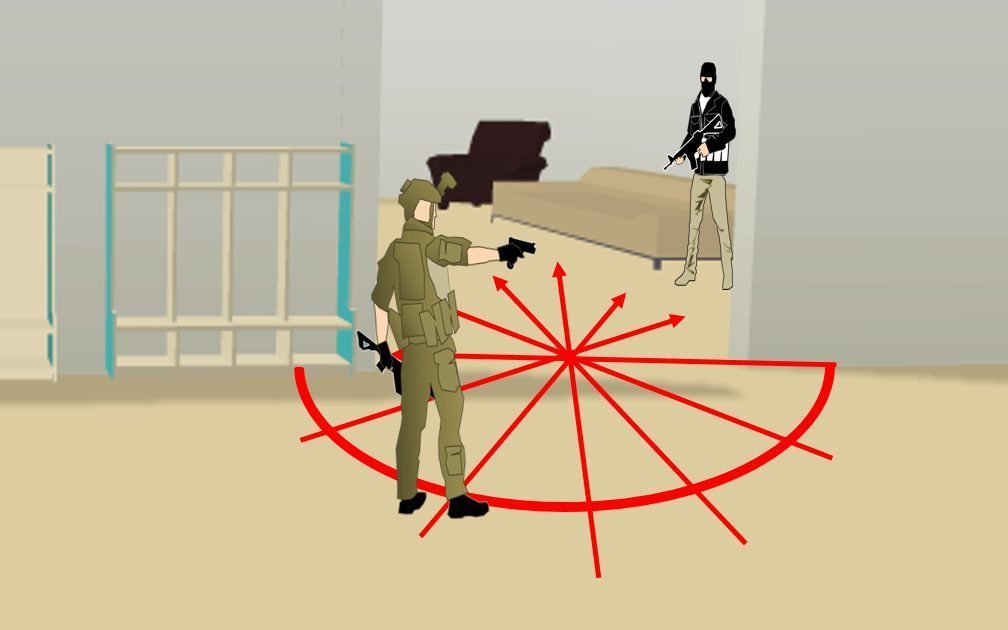Tranquillo wearing our Old School Spotter Up patch
Tactics, tactics, the Holy Grail of high speed shooting, moving, assaults, driving, walking in the bathroom, opening doors, entry/exiting vehicles, eating, etc., just to name a few. What is Tactics? What is the “right way” to do Tactics? Who is an expert on Tactics? How many ways can you do Tactics? In a broad aspect, the answer is whatever it takes to survive an attack or negotiate an obstacle; to have the advantage over a negative situation, and the ability to engage these situations with non-to-minimal injury/damage to self or property for a positive result using the tools I have and the environment around me at that time. Well, you may ask, what is the wrong way to do Tactics? Easier answer; when you stop doing anything. BOOOOM!!
First thing in Basic Tactics are the tools, which are as follows: knowledge, weapons and training.
KNOWLEDGE
Corners have been the pain in my side when it comes to tactics. I attended a SWAT Competition and one of the events was in a shoot house. We trained and trained on clearing your corners, I even set up targets in the corners and dinged guys for not clearing their corners over and over. Fast forward to the day of, I’m up and game on! The buzzer sounds and I go out like lighting. The first room I hit my corners and engaged two targets and move on to clear the rest of the house in one of the fastest time. The RSO looks at me and says” dang, that was fast and would have been perfect if you would have engaged the target in the corner”. Me being me, I said, “NO WAY MAN!” As we walked to the very first room I saw it before I even entered the room, a freaking target just behind a partition. He looked at me and smiled because I wasn’t the only one who missed it, but not an excuse and lucky it was a competition and not a real life operation. I kicked myself in the butt for about a week because I “knew” to check my corners.
Knowledge is key; always check or “PIE” your corners using angles, cover and concealment to your advantage. Think of it as less of you and more of them, meaning you want to see more of them and they see less of you. You always want to utilize at least a two man concept when performing tactics but sometimes that’s not always available to you in some cases. When you have two or more persons you share the sandwich, when there’s only you, you eat the whole sandwich by yourself. As long as you have the basic knowledge of tactics you will survive.
When approaching a corner don’t stand so close to the door before you enter, give some distance where you can use that angle to your advantage gathering as much information from outside the door before committing. Identify your target(s) before breaking the threshold, when possible. Engage your threat before breaking the threshold, when able. Remember more of them, less of you. In order to practice this you need a partner to stand inside of as room and as you pie the door, finding your center point, or for simple terms the corner you’re using for cover/concealment. As you see your threat (partner) stop and see how much of them they see of you in relation to how much you see of them. You will notice as you walk back, using the same angle, how much more of them you see and how much less of you they see. As you walk forward, using the same angle, the reverse affect happens, and more you are exposed and less of them
WEAPONS
What is a weapon? Anything! As far as law enforcement is concerned, you have your long rifle and handgun. These weapon systems may be different in size and caliber but the concept is still the same when deployed. The average shooting range, on most local missions, when engaging a target is less than 10 yards, so you should be able to fire upon and hit a static threat from that distance without missing. If you can’t, please go to the range and get proper training because the target you actually shoot at will be moving.
In a civilian aspect, look around as you read this article and identify five weapons. The chair you’re sitting in, the keyboard, the mouse, pen, pencil, mug, books, paper (rolled up), etc… If it can be used to cut, puncture or strike to cause some physical injury it is considered a weapon in my book. Guns and knives are the obvious but not always readily accessible or preferred by some people, so what are my other options? That’s what you should be thinking at all times, pre-gaming it for lesser words, “What’s My Next Move”. If you can pick it up or move it by any means, it’s a weapon.
TRAINING
Speaks for itself. No training, you’re doing it wrong. Still no training, you’re really doing it wrong. “But I don’t have time to train”, is what I get sometimes, not an excuse. Believe it or not we train every day in our normal day to day activity. When you wake up you should train yourself to clear ever corner of your house as you walk thru it. When you leave for work you should be pre-gaming what you will do if you walk outside and you are attacked. If a car pulls out in front of me at “this” intersection, where can I steer to avoid it? When you get to work you should looking for the egress routes when something happens. And at all times think if you were the bad guy, where would you attack, how would you attack, what are the soft spots, who are the most vulnerable, and the list goes on. Train, Train, Train!
Single Person by Eli at Project Gecko. I love that hoodie Eli!


